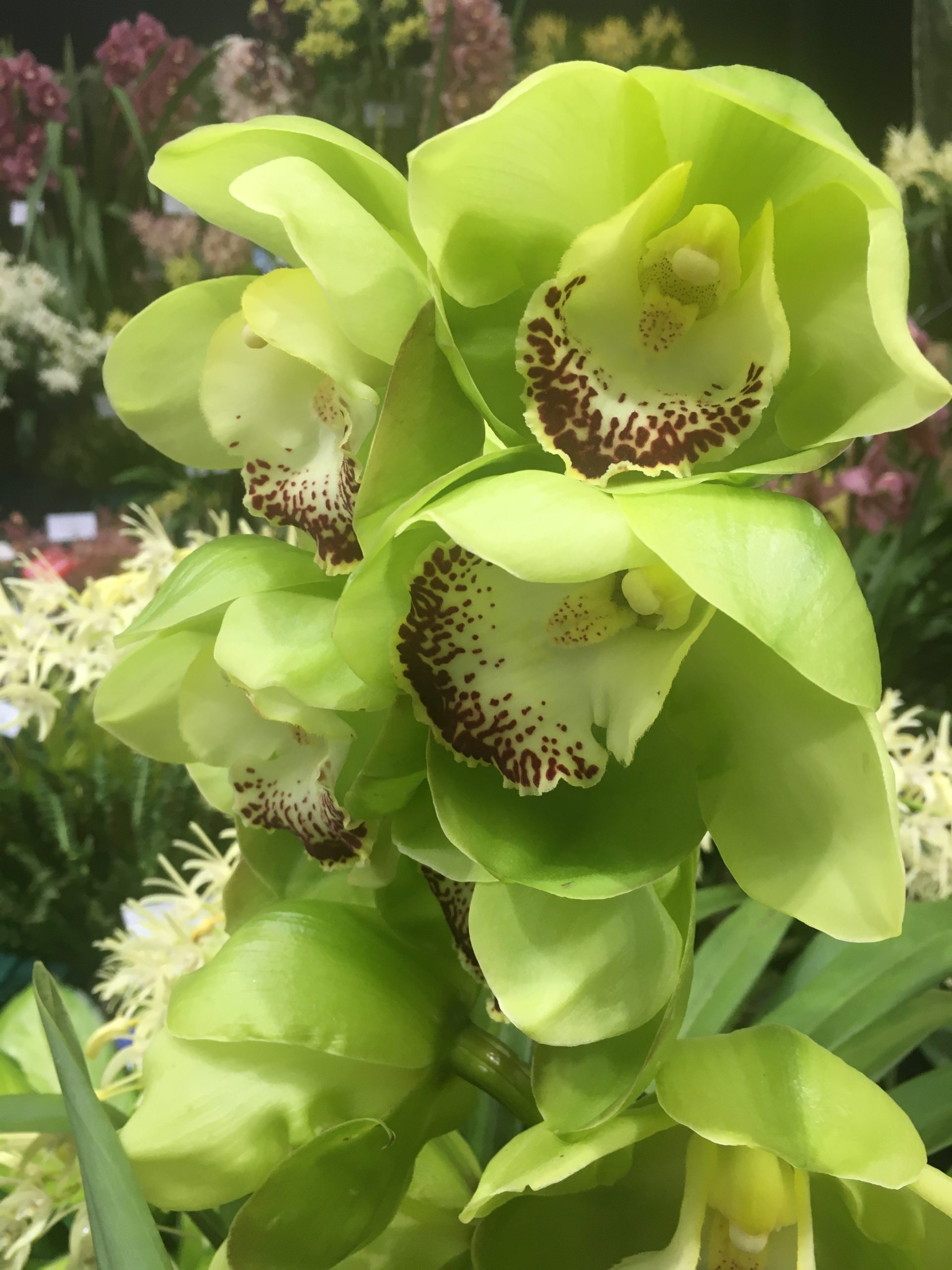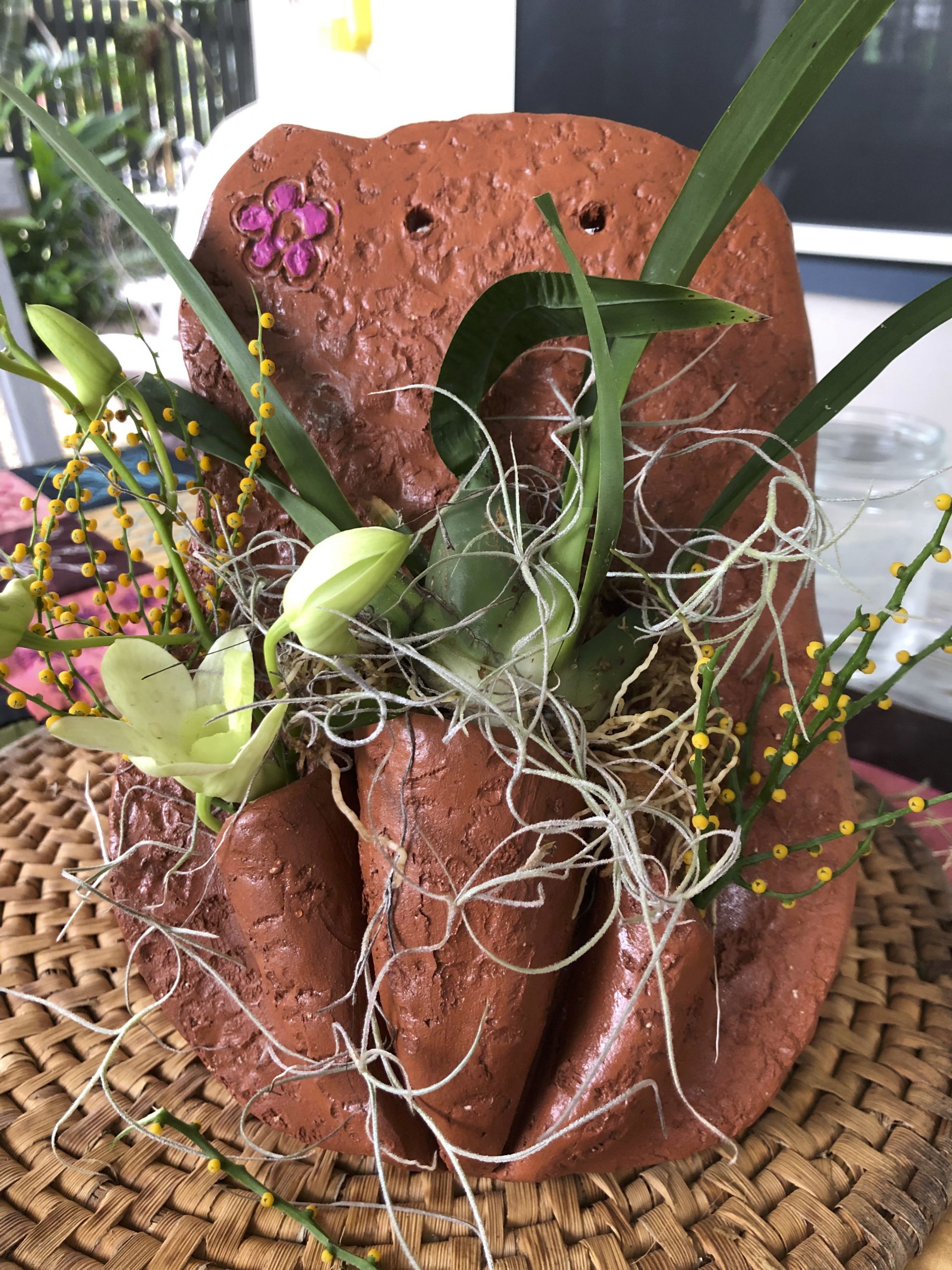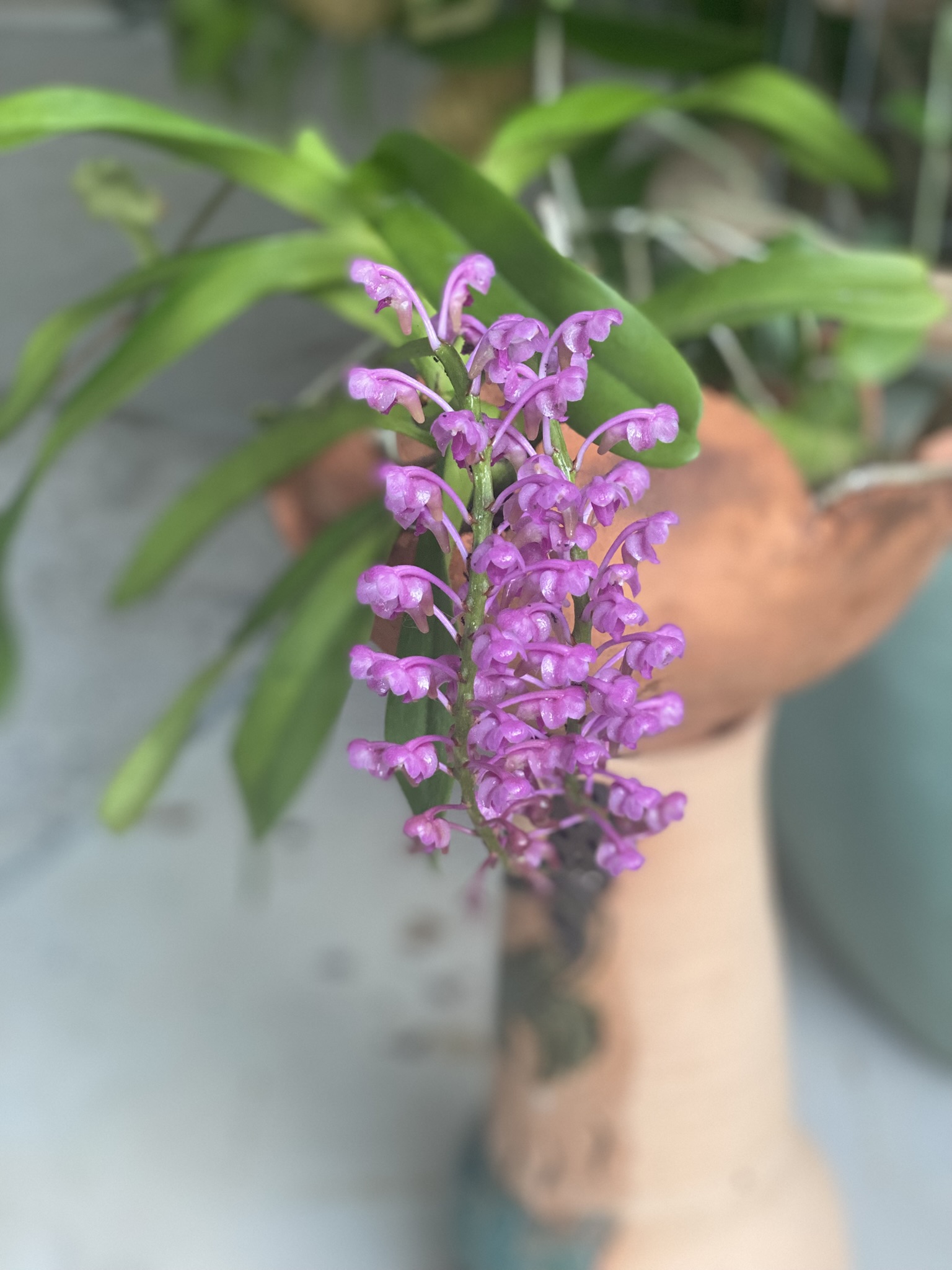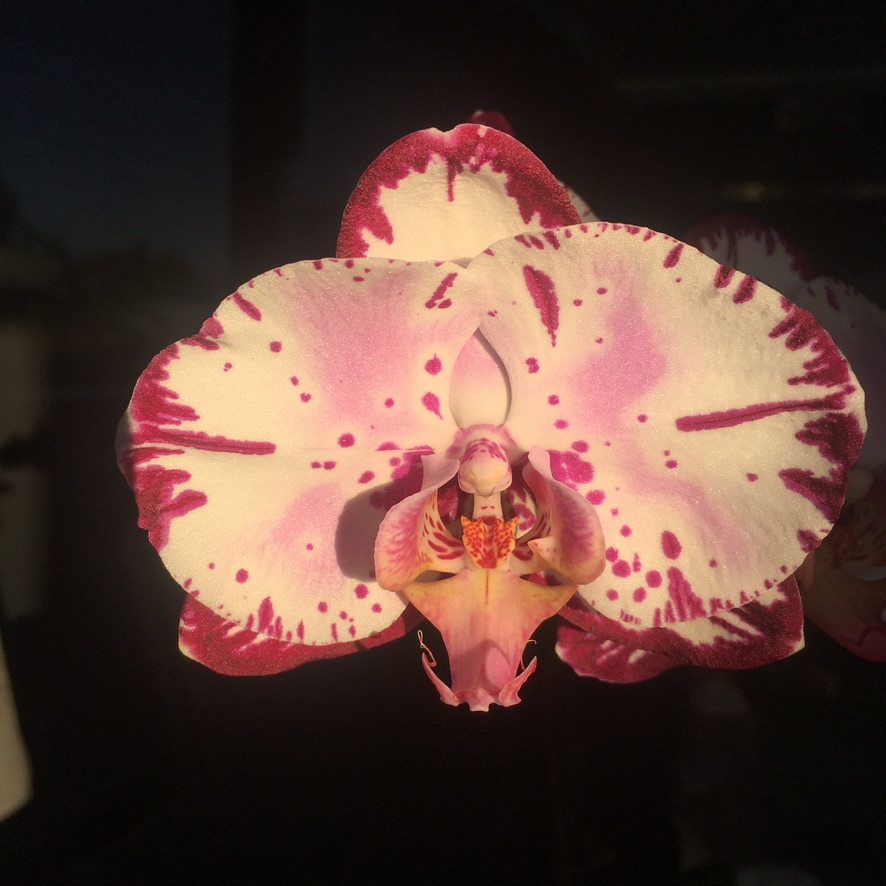I think I was in my early twenties when my Dad arrived at my house with two orchids; a Cymbidium and a small dainty purple flowered Dendrobium species : kingianum. “You want these?”
The Cymbidium had been living under the dappled shade of his lemon tree. The plastic pot had grown brittle and thin with age and the orchid’s giant pseudobulbs had busted through the sides; on its advance outward.
I said yes and and began to think about repotting the Cymbidium into a nice shiny ceramic pot. “Don’t repot it,” he said. ‘They like to be pot bound and it’s in flower.’
Some weeks later the Cymbidium flowered in colours of coffee and ochre and I was mesmerised.
Many years later I moved to the sub-tropics in the mountainous hinterland with its crisp winters, and hot humid summers. The cymbidium continued to flower but the Dendrobium began to suffer a little in the humidity, with black spotting.
I thought it was time to try growing other orchids and that started in the Kmart garden centre. Here you could buy a range of flowering Phalaenopsis orchids or phallies. The large white, pink or patterned flowers, bloomed for weeks, and when they finished flowering, you chucked them in the compost bin.
This common practice is such a waste but orchids were high maintenance and hard to grow, especially when you’re overwatering them.
Eventually I said goodbye to my two gifted orchids and a 10 metre tunnel house on 2 acres of land and downsized to a 1/4 acre block in the wet tropics.
You can call me organic or lazy but I didn’t like to spray, and with the humidity and insects it became impossible for me to grow the plants I loved and ate.
When you consider that of the nearly 30,000 to 35.000 orchid species 50% are concentrated in the tropics growing orchids should have been a no brainer, but I’m a slow learner and I continued to battle with high humidity and monsoons, growing plants that had no future.
So here I was in the steamy tropics with lots of Acalyphas and more Acalyphas. I’ve nothing against them. Their brassy orange and red foliage is bright and colourful particularly in Autumn. It’s just a pity they’re untameable and a magnet for whiteflies. I needed to rethink my line of plants.
This rethink was jolted by a couple of orchids left by the previous owner in the form of an Oncidium sp. When it flowered, bright yellow in the winter
sunshine, it lit up my life.
Then another surprise a Dendrobium with a velvety dark purple flower. I think at this stage, I started to take a real interest. That interest was further piqued at a swap and meet at our local garden group meeting. One of the ladies bought what looked like a pile of sticks with long tentacles.
“What are they?” “Orchids. “They have yellow flowers. “They’re growing up my trees everywhere.” Her advice was to just stick it somewhere. It will grow with neglect. I was confused. Orchids and neglect?
I carefully tied these sticks to a palm trunk with a pair of old panty hose, a useless fashion item in the tropics, but great for tying up plants. I’m yet to see it flower but I would think it would be an antelope variety Dendrobium.
This was a ‘eureka’ moment at the ease of growing orchids. Are you serious? Chuck em on the trees and you’re all set, appeals, again, to my lazy side.
The penny had finally dropped. I could grow orchids outside on any tree or shrub that didn’t shed its bark and ‘mounting’ became a bigger part of my process and vocabulary.
I joined my local orchid society, the American Orchid Society and subscribed to Australian Orchids.
I learned that most tropical orchids were epiphytes or lithophytes meaning that their aerial roots would attach themselves to wood or rocks. I also learned how to water sparingly or did I?
There was a dilemma however, I didn’t have the room or the inclination to build another shade house and trees are a luxury in a small garden.
Then a new friend introduced me to pottery and I found a way to make orchid mounts and planters. I didn’t need to know the virtues of terracotta pots for plants. Good drainage, less temperature fluctuations etc etc.
The orchid roots (velamen) would easily stick to these clay mounts just as they did to pieces of wood, tree fern or cork.
At first I didn’t know which genera to grow. They would need to be warm to hot growing, and miniature or compact, so they would fit on my mounts, and into the small pots, in my small garden.
An up side to the clay mounted orchids was their mobility. This was an important consideration for a couple of reasons. In winter orchids will take a lot more sunshine. You can move pots and mounts around to capture this energy. When the plants flowered they could be taken for benching/showng at the local
orchid club, without cutting down a tree.
As I started to buy plants, which in a rural area is online, I discovered the orchid ‘flask’. Tiny baby orchids with hardly any roots that came in bottles. Bottled babies. I rinsed the fetal gunk off them and placed them in trays of sphagnum moss, or glued them to my clay mounts.
They were some losses, and so the cost of each baby made them expensive. I decided to let someone else do the ‘growing up’ and now I buy a combination of flasks and seedlings.
I have collected 53 orchids over a mixed genera including Phalaenopsis, Dendrobium, Sarcochilus, Cattleya and Tolumnias, and the number is growing. I want to add orchids listed as endangered, rare or threatened (Queensland) and there are approximately 104 of those.
So far I haven’t had to built a shade house, I have started to build a very tall garden shed to accomodate my obsession and I have opened a small business. Sell some. Buy some more!
Will it end? Not yet. There is another way to add to my collection; breeding. Hopefully I still have time. As the saying goes “I don’t have a problem. I have a collection.”
Want to learn what I have learned about growing orchids? See my 4 part series by starting here
The American Orchid Society is a complete resource for all things orchid.




